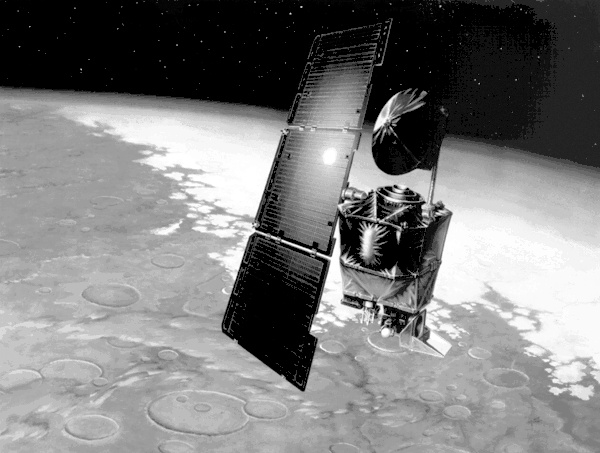Space, metrics, and Thomas Jefferson
On September 23, 1999, NASA's $300 million Mars Orbiter, flying through space millions of miles from Earth, fired its engines to slow it into orbit around Mars. Its 10-month journey complete, the craft flew silently above the Martian sky at a leisurely 12,000 miles per hour. It followed all its programmed instructions and was, as planned, turning behind Mars' dark side, disappearing for the first time. The command staff waited expectantly for the Orbiter, 10 years in the making, to reappear on the other side (see Figure 8-1). Ten minutes later, well past its expected timeline, it had not arrived. Mission control feared the worst. They searched the Mars atmosphere but there was nothing: the Orbiter was gone.
They'd learn later that the spacecraft entered the wrong orbit, flying too low. Instead of a routine trip around the planet, it approached at a deadly angle and was destroyed in the atmosphere. What took longer to understand was the cause. Somehow, somewhere, an equation failed to convert units from metric to English, and the $300 million Orbiter was sent on a path of certain destruction. It was doomed before it even launched.

Figure 8-1. The poor little Mars Orbiter. Had Jefferson succeeded, the craft might have survived its trip to Mars.
As is always the case, this failure had many causes. The Orbiter was part of the "Faster, Better, Cheaper" ...
Get The Myths of Innovation now with the O’Reilly learning platform.
O’Reilly members experience books, live events, courses curated by job role, and more from O’Reilly and nearly 200 top publishers.

